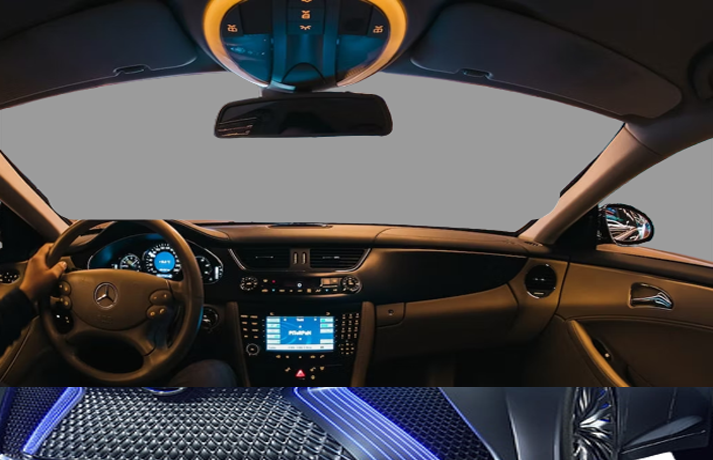The Future of Autonomous driving is a rapidly evolving technology, and autonomous driving has the potential to completely change the way we travel. Autonomous vehicles, or self-driving automobiles, are ones that can drive themselves on highways and city streets. They perceive their environment and choose how to move using a variety of sensors, including cameras, radar, and lidar.
The advantages of autonomous driving are numerous. It has the ability to increase air quality, lessen traffic congestion, and make roads safer. As a new form of transportation for those who are unable to drive themselves, such as the elderly and those with impairments, autonomous vehicles may also be available.
Read: The Perfect Toyota for Your Next Adventure
Before autonomous driving can become a reality, there are still obstacles to be addressed. The creation of trustworthy and secure autonomous driving software is a challenge. This software must be able to deal with a wide range of circumstances, such as inclement weather, unforeseen hurdles, and human mistakes.
The regulatory environment presents another difficulty. To create rules for driverless vehicles, governments all over the world are still working on it. These rules must guarantee that autonomous vehicles are secure and do not endanger public safety.

What is autonomous driving?
The term “autonomous driving” describes a vehicle’s capacity to navigate and run without human interference. The car can observe its surroundings, analyze data, and make judgments in real-time thanks to the employment of cutting-edge sensors, cameras, radar systems, and artificial intelligence algorithms. By replacing the need for human drivers with this technology, transportation will become safer, more effective, and more convenient.
What advantages does autonomous driving offer?
Numerous advantages of autonomous driving have the potential to completely change how we travel. Several of these benefits include:
Enhanced safety: Human error, which causes the bulk of traffic accidents, can be considerably decreased with autonomous vehicles. All travelers will experience safer journeys because of the use of cutting-edge sensors and algorithms that can identify and avoid potential dangers.
Efficiency gain: The use of autonomous cars has the potential to improve traffic efficiency and lessen congestion. These vehicles may cooperate with one another thanks to their integrated communication systems, resulting in less congested traffic and quicker trip times.
Better accessibility: Autonomous driving has the potential to offer mobility options for people who are unable to drive due to age or physical limitations. These people will reclaim their independence and have more options and experiences available to them.
Lower environmental impact: By maximizing fuel efficiency and cutting pollutants, autonomous vehicles can help create a cleaner future. Maximizing energy efficiency can reduce environmental pollution by reducing stop-and-go traffic and stop-and-go driving.
Read: Fuel-Efficient Driving Tips
What difficulties does autonomous driving present?
The deployment of autonomous driving faces a number of difficulties, even though the future of the technology appears bright. Several of these difficulties include:
Legal and regulatory framework: Governments and policymakers must set thorough rules that guarantee the ethical, secure, and safe features of autonomous driving. It will be necessary to set precise rules for liability, privacy, cybersecurity, and data protection.
Cybersecurity risks: Vehicles are more susceptible to hacking and cyberattacks as they depend more on connectivity and software. To safeguard the safety and autonomy of autonomous cars from potential dangers, strong security measures must be in place.
Convincing the public of the safety and dependability of autonomous driving is essential for gaining their acceptance and trust. Its widespread acceptance will depend on establishing trust and educating the public about its advantages.

The current state of autonomous driving technology
Although the technology for autonomous driving is still in its infancy, there has been substantial advancement in recent years. Numerous businesses are creating autonomous driving technologies, some of which have already begun to undergo testing on public roads.
From Level 0 (completely unautomated) through Level 5, there are five levels of autonomous driving. At Level 2 or Level 3, the majority of current autonomous driving systems can take over some driving duties but still require human input.
Waymo, Uber, Tesla, and General Motors are a few of the businesses that are pioneering autonomous driving technology. In order to bring autonomous vehicles to market in the upcoming years, these businesses are pouring billions of dollars into research and development.
How much autonomy have we so far attained?
There are currently five levels of autonomy for autonomous driving technologies, ranging from Level 0 (no automation) to Level 5 (complete automation). Our current level of automation, Level 2, includes elements like adaptive cruise control, lane-keeping assistance, and automated parking. True autonomous vehicles, which can drive themselves without a driver’s input, have not yet hit the market.
Read: What are the Demands of the Striking Autoworkers?
What kinds of autonomous driving systems are there?
The four main categories of autonomous driving systems are as follows:
Driver-assistance systems: These systems help the driver with certain tasks, such as keeping a safe distance from the car in front of them or automatically modifying speed in response to traffic circumstances, and they offer some automation.
Partial automation: At this level, the vehicle is capable of controlling steering and acceleration/deceleration, but some jobs or intricacies still call for human input.
Conditional automation: The vehicle may manage the majority of driving-related tasks at this level when operating in certain circumstances or along predetermined routes. However, when a scenario arises where the system is unable to handle it, human involvement is required.
High automation: At this point, the car is capable of managing most driving responsibilities in a variety of situations. In rare cases, human assistance might be necessary.
Which businesses are pioneering autonomous driving?
In the race for dominance and leadership, several businesses are making amazing strides in the field of autonomous driving. Among the front-runners are industry titans like Tesla, Waymo (an Alphabet Inc. subsidiary), and General Motors with its Cruise business. These businesses make significant investments in R&D, working with specialists to advance autonomous technology.
The potential of autonomous vehicles
There is a lot of potential for autonomous driving to transform the way we travel, but the future of this technology is unclear. Within the next ten years, it is conceivable that completely autonomous vehicles will be driving on public roads. On traffic flow, congestion, and the environment, these vehicles may have a significant impact.
Additionally, autonomous vehicles may improve accessibility for those unable to drive themselves. They might also offer new modes of mobility, such as ride-sharing and carpooling.
Before autonomous driving becomes a reality, there are a few obstacles that must be solved. The price of autonomous vehicles is one issue. It is unclear when these vehicles will be within the reach of the majority of people because they are still expensive to build and manufacture.
The adoption of driverless vehicles by the general public is another difficulty. Some people may be hesitant to give up control of their cars because they have concerns about their safety.
The future of self driving cars looks promising with the obstacles they face. Our roadways may become safer, more effective, and more accessible thanks to this technology. Being a part of the development of autonomous driving at this time is thrilling, and I am interested to see what the future holds.

When will completely autonomous vehicles be driving on public roads?
Although it is challenging to give a precise time frame, experts think it will still be a few years before fully autonomous vehicles that can function in every situation or environment become a reality. Nevertheless, it is anticipated that technology will improve gradually, resulting in a steady increase in automation and the incorporation of autonomous characteristics in vehicles.
What effects might we expect from autonomous driving on the automobile sector?
The car industry could undergo many revolutions as a result of autonomous driving. Traditional automakers are adjusting to this transition by cooperating with tech firms and investing in autonomous technology. Ride-sharing platforms and autonomous taxi services will likely become more popular as the industry transitions from individual automobile ownership to mobility as a service.
Read: The Top-Rated Cars for Safety: A Comprehensive Guide
What moral ramifications do autonomous vehicles have?
The rise of autonomous driving brings up important ethical issues that require discussion. For instance, in circumstances where injury is certain, how should self-driving cars prioritize safety? Who is responsible if an accident involving an autonomous vehicle occurs? In order to create a framework that supports ethical decision-making in autonomous systems, policymakers, researchers, and industry professionals are actively participating in these talks.
Conclusion
There are a lot of opportunities for autonomous driving in the future. This technology has the potential to transform transportation and improve the accessibility, efficiency, and safety of our roads. Autonomous vehicles must first overcome a number of obstacles, though. I have no doubt that these difficulties will be overcome, and I look forward to what the future of autonomous driving holds.
I wish you had a better understanding of the future of autonomous driving after reading this blog post. Please leave any queries in the comments section below



0 Comments